The Album Era
Although long-playing records, called "LPs," had been in existence for 15 years, the true "album era" did not begin until the Beatles released Rubber Soul in the mid 1960s. Prior to that, LPs were simply a method of selling a lot of recordings all at once, and a convenient alternative to stacking 10 singles on a turntable.
Strong LPs featured one or two current hits, a couple of possible future hits, and the rest was filler material. Fillers consisted of everything from session musician instrumentals to covers of old standards to spoken messages to fans.
These fans listened intently to the entire LP, but frequently skipped weaker selections with subsequent playings. Listening sessions were seldom an event with pop LPs; that was reserved for more esoteric material such as jazz or folk. (In fact, the first "mainstream" album that became a listening event was The Button-down Mind of Bob Newhart, the number one selling LP in 1960 -- you can look it up -- and some historians consider this album to be the "first.") Many argue that Bob Dylan delivered on the "album" concept, but he did not enjoy true mainstream "pop" appeal. It was Rubber Soul that forever changed the world of pop/rock by ushering in the era of album listening.
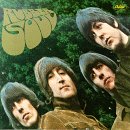
To the surprise of critics, fans, and most importantly, "competitors," Rubber Soul contained no filler material. As Brian Wilson noted, "It was the first album I listened to where every song was a gas." He was thus inspired to create Pet Sounds, which many still consider the first true pop "album" experience. While it is arguably the most complex musically, and undoubtedly an early classic, it really cannot claim the honor of being the first.
Forever linked to Pet Sounds is Wilson's failed follow-up, originally called Dumb Angel, and renamed Smile. It was shelved when he suffered a drug-related breakdown, so it can't appear on the list. Tracks were periodically trotted out on Beach Boys albums during the next five years, and snippets of unreleased material showed up on a box set in the mid 1990's. Fans and critics agree that if the album had been shipped as planned, it would've been more advanced than the next Beatles release.
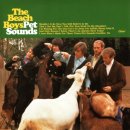
The story goes that a chance meeting between Brian Wilson and Paul McCartney was a true musical mutual admiration encounter. Wilson raved about Rubber Soul. When McCartney said that Pet Sounds was the best album he had ever heard, and that it was inspiring the Beatles to even greater heights, Wilson replied that his next effort, Smile, would top it. McCartney suggested that he hurry, because the Beatles had a gem of their own that was pra. The rest is history...Wilson could never fully reign in his musical vision. He cracked up shortly afterward, and the Beatles released Sgt. Pepper's Lonely Hearts Club Band.
Where Rubber Soul and Pet Sounds created a thought-provoking, introspective experience, Sgt. Pepper launches the listener to unimagined heights. Like a rock musical, the title tune serves to create a sense of anticipation and announce what is to follow. It seques and settles into the unassuming intro of With a Little Help from My Friends, which little by little takes off on a musical ride. The album flows, even though many of the songs are a significant departure from the title tune. By the time A Day in the Life rolls around, the pleasant strains of the first two selections have been replaced by a sense of urgency, which builds to an explosive climax that leaves the listener simultaneously relieved, confused, and amazed at what has just happened. This is not Love Me Do.
So where did this masterpiece come from? According to an authoritative UK website about Sgt Pepper:
Paul also took motivation from the Beach Boys album 'Pet Sounds' which had been released in mid-1966. Amazed at the depth of sound and its imagination he was initially scared that the Beatles could not match it. However after several months thought, he finally came up with an idea to go one better. Paul perhaps tried a little too hard. His original plan was for a 'concept' album about an imaginary band with each member assuming an alter-ego; e.g. Ringo as Billy Shears.
McCartney found it difficult to turn concept into reality, and stumbled a bit. The other Beatles soon nixed McCartney's idea, even though they kept much of it and built upon it. The result is likely better than the original concept would've been.
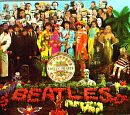
So compelling is Sgt. Pepper that artists continue to pay tribute to it, dating back to Johnny Rivers' timeless Summer Rain. So compelling that people still listen over and over, and usually hear something new with each listen. For these reasons and its place in history, Sgt. Pepper gets kudos as the best album of the album era.
Where Rubber Soul forever changed LPs, Sgt. Pepper forever changed pop music. A host of "concept" albums followed. Expressionists like Jimi Hendrix, Jefferson Airplane, Cream, and others suddenly found their outlet. Airplane's Surrealistic Pillow and Cream's Disreali Gears were released in the years that followed...these sounds and styles jumped off into a variety of directions, from Led Zeppelin to Crosby Stills Nash & Young. Each of these artists created memorable albums, and each album enjoyed a period when listening to it was an event.
In their day, any of the aforementioned albums could be included in the big ten. But an album is meant to be played, and playing Hendrix, Jefferson Airplane, or Led Zep reveals why they are not on "the list;" the music sounds dated, and not every song is "a gas." So they simmer just under the top ten.
In the immediate post-Pepper era, the best and most original albums were done by the Beatles themselves. Even Magical Mystery Tour belongs on the list, along with the unamed "White" album and Abbey Road. Some Rolling Stones material comes close, but again, every song has to be "a gas."
A handful of groups in the U.S. and U.K. delivered brilliant, original-sounding albums during the late 1960s. Among these are the Doors first album, which is on the list. Others, notably the Kinks and the Who, eventually released albums that bettered their early works.
The Doors released their first LP in 1967, hot on the heels of Sgt. Pepper. Some of the selections can only be called "great" in that they are so bizarre; perhaps a more appropriate Doors album would be L.A. Woman. Critics, however, call this effort "uninspired." But it remains a timeless album and most -- if not all -- of the songs are classics.
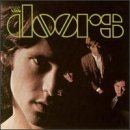
Best known for Light My Fire and a harrowing number, The End, this LP is probably more influential in terms of lyrical content than any on this list.
After the hellish musical conclusion to the 1960's at Altamont, with a world weary of wars and protests, the stage was set for more peaceful music. Of the many albums that are considered classics from this era, two outshone the rest, and remain classics today. While their quality would surprise no one, their monumental success surprised everyone.
Consider that all the classics listed to this point are either from California or London. As the spirit of the 1960s ran out of gas, it was time for the New York sound to re-establish its domination. California and London didn't disappear -- and in fact many classic albums were released at this time -- but the two that transcend were firmly rooted in the East Coast.
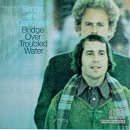
First was Bridge Over Troubled Water, which remains Paul Simon's shining star, despite the later success of Graceland. While none doubted that the genius responsible for Mrs. Robinson and Sounds of Silence would continue to do great things, the sheer brilliance of this album was an eye-opener. It established Simon as one of the great 20th century composers. Gems include the title tune, the unusual and folky El Condor Pasa, the rollicking Cecilia, and a stunner called The Boxer. Beyond those timeless tunes, any selection on the album could have easily been a top ten hit.
The second all-time album from this era was released by an even more prolific songwriter, Brill Building alum Carol King. With a host of number one songs to her credit (with husband Gerry Goffin) the release of Tapestry was met with the expected critical acclaim but with little anticipation of commercial success. For once the public agreed with the critics, and Tapestry took off. It entered the top 100 album charts in 1970, and stayed for years.
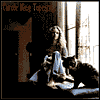
The first number Tapestry made history with was 10 million, which meant that it was one of the largest selling LPs of all time. Then it passed 13 million, making it #1 all-time. When it passed 18 million, Tapestry would be safe from the next epic challenger, Frampton Comes Alive.
Sales have cooled, but the straightforward performance of songs like Smackwater Jack and I Feel the Earth Move are just as viable today as they were three decades ago. And so it remains the ultimate album by a female artist. (Interestingly enough, the first pressing of this album arguably included one potential filler song, an instrumental that Ms. King had removed from the ultimate lineup.)
Not all great albums of this era were as gentle and reflective as Bridge Over Troubled Water and Tapestry. Efforts by the Who, The Band, Faces, Cream, Led Zeppelin, Badfinger, and the ex-Beatles were much edgier. Of this vein of album, one that continues to stand out musically and for originality is The Who's incredible Who's Next.
Originally conceived as a monster follow-up to Tommy, the work in process was called Lighthouse, and was to be Pete Townshend's magnum opus. Townshend, always inspired by Brian Wilson, and also a hard-of-hearing musical genius and uncomfortable social misfit, was probably predestined to repeat Wilson's misfire from five years earlier. Lighthouse would be an all-encompassing musical masterpiece, but the project was overwhelming...the multiple masterpieces playing in Townshend's head were beyond the time and energy available to translate to vinyl. According to the official "Who Net" website, "Lifehouse became unworkable causing Townshend to suffer a nervous breakdown." Sound familiar?
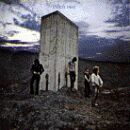
Fortunately for The Who, however, Lighthouse never gained the cult status of Smile because the album they released in its place is rightfully on the big ten list: Who's Next. It included a few of the most accessible numbers slated for Lighthouse, with the addition of John Entwistle's My Wife. Entwistle's composition fits this time, and makes the album even better than it otherwise would be. But what really sets the album apart is that it begins with a monster rock anthem, Baba O'Rielly (which most know as "teenage wasteland") and closes with the ultimate rock anthem, Won't Get Fooled Again. The first words on the album are "Out here in the fields," the last words are "Meet the new boss, same as the old boss." In between, every song is "a gas."
Who fans hold out Lighthouse as what "could've been," and wonder if Townshend, like Wilson, didn't cheat himself out of creating the best album of all time. Since some of the cuts reared their heads on albums such as Odds'n'sods, one might conclude that Lighthouse would be Townshend's overloaded White Album, instead of the Sgt. Pepper-like Who's Next. That is not to say it is similar to Sgt Pepper in its musical direction, but rather in its straightforward beauty and finale that leaves the listener's head spinning.
If ever an artist bridged the gap between the pop of a Paul Simon and the "maximum R & B" of Pete Townshend, it had to be Elton John. While he released a couple of albums that are also classics, and may even be better overall, none is as listenable from "cut to cut" (nowadays they say "track to track") as Don't Shoot Me, I'm Only the Piano Player. Of all the artists on this list, this selection may cause the most grief among fans, many of whom would rate Goodbye, Yellow Brick Road, and Tumbleweed Connection or Honky Chateau ahead of Don't Shoot Me.
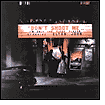
When the "every song is a gas" requirement is applied, Don't Shoot Me steps to the forefront of Elton John albums. On the strength of Daniel and Crocodile Rock, the album is a classic. Even the lesser-known numbers such as Elderberry Wine and Teacher, I Need You are very strong compositions and productions. The album closes with Skyline Pigeon, which may have seemed pretentious at the time, but in hindsight is just one more reason why Elton John has been one of the most highly regarded artists of the past forty years, no matter how troubled or quirky he may be.
Moving along through the Album Era, we arrive firmly in the middle of the 1970s, which most know as the Disco Era. Despite this anomoly, a number of albums were released that arguably belong on the big ten list. The first that comes to mind, and the most obvious, is the aforementioned monster Frampton Comes Alive. This remains a big record today; classics abound. Two drawbacks, however, keep it off the list. First, it is a "live" album; secondly, it contains a couple of songs you really don't want to listen to every time. A few more from that era are Boston's self-titled debut, Fleetwood Mac's Rumours, The Eagles' Hotel California, and Meatloaf's Bat Out of Hell to name a few. These don't make the big list because not every song is a gas, or the sound is too dated.
Most rock critics would rank almost all of these over Tapestry, but we're looking for a well-rounded big ten. If we were simply trying to assemble the best of the best, a couple of the Beatles albums would be on at the expense of some differents sounds. So we'll press on.
Chronologically, next up is Low Budget from Ray and Dave Davies, better known as The Kinks. Here's a group that defies description. Art rock? Literary rock? Avant-garde rock? Strange, when you consider that some rock authorities credit The Kinks with the first true "hard rock" song, a mid-sixties ditty called You Really Got Me.
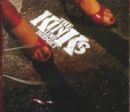
The Kinks remain as hard to classify as Lola, the hero or heroine from their signature song of the same name. The Davies brothers created a number of similar quality songs, but unfortunately, they were all spread out on mediocre albums such as Sleepwalker and Misfits. That is, until the late 1970s when they managed to stuff Low Budget full of gems. Here, every song meets the requirement, including A Gallon of Gas. And unlike the previous misfits and misfires, the album is marked with different -- but meshing -- musical styles. From the abrasive Attitude to the soaring Superman to the epic Catch Me Now I'm Falling, it could easily be repackaged as a greatest hits album.
Sadly, following Low Budget, the Davies returned to their proven formula of releasing albums with one or two classics amidst a lot of artsy drivel. Kinks fans will point to the earlier and later material as superior to Low Budget, but in our library of the ten ultimate album experiences, this one stands.
If you're keeping score, two remain. Both albums listed are from late 1970s stalwarts, and both will raise the eyebrows of their ardent fans, who will argue that earlier releases were far better.
Some say the late 1970s was a musical wasteland. Perhaps it was; a listen to albums such as Get the Knack, The Cars, AC/DC's High Voltage, Blondie's Parallel Lines, or anything by Queen, should convince you otherwise. Each is an album that required hanging out by the stereo for close listening...a few friends, a few beers...the albums still work today. Unfortunately, nobody has the time or inclination to listen.
The standout is The Long Run from The Eagles. Released in late 1979, this album is sonically superior to Hotel California. It is also more musically diverse, and contains no clunkers like their earlier masterpiece. To this day, the musical success of Life in the Fast Lane continues to puzzle me, so I guess I never got the whole Hotel California thing anyway.
Unfortunately, The Long Run includes one ersatz filler selection, a re-recording of Joe Walsh's In the City. But because the song is a gas, and nobody bothered to buy the earlier soundtrack to The Warriors, it gets a passing grade. Besides, any album that covers the ground between the goofy The Greeks Don't Want No Freaks and the Pet Sounds-influenced I Can't Tell You Why deserves recognition.
The Eagles disintegrated after the release of this album; the supporting tour would be their last. Had they delivered more material to lend perspective, The Long Run would be better remembered. So its inclusion here may be questioned...yet it remains a must for the collection.
Moving into the 1980's, the album era was about to come to a close. The demise of the album was brought about by a few things, the first being a number of mediocre efforts from established acts. The Cars Panorama stiffed, Peter Frampton was nearly killed in a car accident and vanished from the scene, Fleetwood Mac's Tusk was disappointing, Brian Wilson's comeback proved to be a farce, and John Lennon was shot just as Double Fantasy was climbing the charts.
But a couple of albums are worth noting. Efforts by The Police, Dire Straits, Phil Collins, The B-52s, Billy Joel, and a few others remain timeless. The big dog of this period was Bruce Springsteen, and his magnum opus would prove to be the last great gasp of the album era.
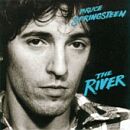
Like a few of the albums on this list, Springsteen fans will vehemently argue that earlier work outshines The River. Indeed it does; no single song on The River attains the level of Born to Run, Rosalita or Badlands. So we can defer to those and list the Born to Run album instead, but The River ends what Rubber Soul began...it was the last time a monumental album was released in which every song was "a gas," and people gathered to listen to it. Because it symbolizes the end of the era, it stays.
Here's the list in chronological order...
- Rubber Soul -- The Beatles
- Pet Sounds -- The Beach Boys
- Sgt. Pepper -- The Beatles
- The Doors -- The Doors
- Bridge Over Troubled Water -- Simon & Garfunkel
- Tapestry -- Carol King
- Who's Next -- The Who
- Don't Shoot Me, I'm Only the Piano Player -- Elton John
- Low Budget -- The Kinks
- The Long Run -- The Eagles
- The River -- Bruce Springsteen
Sharp readers will notice that, like the NCAA football conference, the big ten list is actually eleven. If you're a stickler for numbers, take Rubber Soul off, since many rock critics regard Pet Sounds as the first "album experience."
Here's the same list in order of musical influence and importance...
- Sgt. Pepper -- The Beatles
- Pet Sounds -- The Beach Boys
- Rubber Soul -- The Beatles
- The Doors -- The Doors
- Tapestry -- Carol King
- Bridge Over Troubled Water -- Simon & Garfunkel
- Who's Next -- The Who
- Don't Shoot Me, I'm Only the Piano Player -- Elton John
- The Long Run -- The Eagles
- The River -- Bruce Springsteen
- Low Budget -- The Kinks
When you look at it this way, you might agree that the last three albums have had little, if any, lasting influence on the music scene. Indeed, a number of albums enjoyed greater acclaim and longevity. With that in mind, is the above list accurate or even fair? Well, yes, keeping in mind that our purpose is to define the "album era," not to list the biggest or best. Listen to the albums chronologically, and you will hear the evolution of pop music in the album era, and the list will make sense.
But, rather than rile the rock hezbollah, we'll post an alternate album list, in no particular order...
- Boston -- Boston
- Disreali Gears -- Cream
- Cosmo's Factory -- Creedence Clearwater Revival
- Music from Big Pink -- The Band
- Rumours -- Fleetwood Mac
- Bat Out of Hell -- Meatloaf
- Piano Man -- Billy Joel
- Ogden Nut Gone Flake -- Faces
- Tommy -- The Who
- Abbey Road -- The Beatles
- Pink Floyd -- The Wall
...or make your own list. The criteria is that it must be from the "album era," 1965-1981, the music must be relevant today, and every song has to be "a gas." The jacket should be interesting, either in content, art, or photography. If the dust jackets can be pored over while listening, it's even better. Most importantly, you have to imagine if a group of people would've taken the time to knock down a glass of wine and listen through the entire album...a scene that was repeated countless times at college dorms for every one of the above albums.
By 1982 or 1983 it was all over...the album experience was gone. CDs loomed on the horizon, and the lack of any truly great LPs hurt sales. But of even greater significance was that when college students gathered for the music event, it was around a television set. MTV made the album gathering a multi-media experience. Why explore music in your head when it can be explained to you in videos? Another problem was that bands became faceless entities...soaring guitars, power lyrics...but nobody could name a single member of the group: Corporate Rock. (Can you name a single member of Supertramp?) With all these factors lined up against it, the album was dead.
A couple of artists kept the concept alive. Paul Simon's Graceland and a couple of offerings from John Mellencamp were perfect fodder, but how can you sit around and share the experience with a tiny CD case? In recent years, successful CDs have become complete multi-media experiences, with videos, remixes, alternate RAP mixes, and who knows what else. So it is much more than an "album experience."
Sometimes, however, less is more. Just ask anyone who shared a six-pack to the sounds of Aqualung.
More Top Ten Album-Era Lists; in Process
Top Live Albums
- Frampton Comes Alive -- Peter Frampton
- The Last Waltz -- The Band
- Hot August Night -- Neil Diamond
- Live '69 London -- The Beach Boys
- Live at Budokan -- Cheap Trick
- Live at San Quentin -- Johnny Cash
- Get Your Ya-Yas Out -- The Rolling Stones
- Wings Over America -- Paul McCartney & Wings
- Live Bullet -- Bob Seger & the Silver Bullet Band
- The Main Event -- Frank Sinatra
Top Unreleased Albums and Imagined Albums
- Smile -- The Beach Boys
- Lighthouse -- The Who
- A Complete Sgt. Pepper -- The Beatles Imagine if McCartney were able to turn his original concept into reality.
- Landlocked -- The Beach Boys
- Electric Nebraska -- Bruce Springsteen this time, with the E-Street Band
- Let it Be -- The Beatles with George Martin in firm control
- Frampton Rocks On -- Peter Frampton a real follow up to "Frampton Comes Alive." Instead we waited two years for "I'm In You."
- Tapestry -- The Mamas & The Papas if they had stayed together and recorded the songs for Carol King
- Return from Paris -- The Doors Jim Morrison lived, and offers an alternative to corporate rock and disco.
- Soundtrack to "A Star Is Born" -- Barbra Streisand & Elvis Presley Her original choice for Kristofferson's part